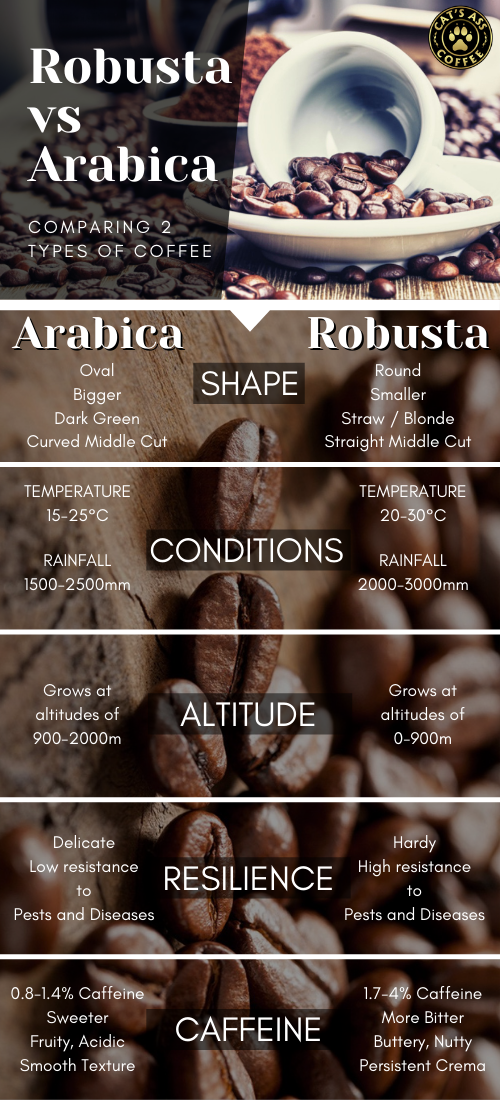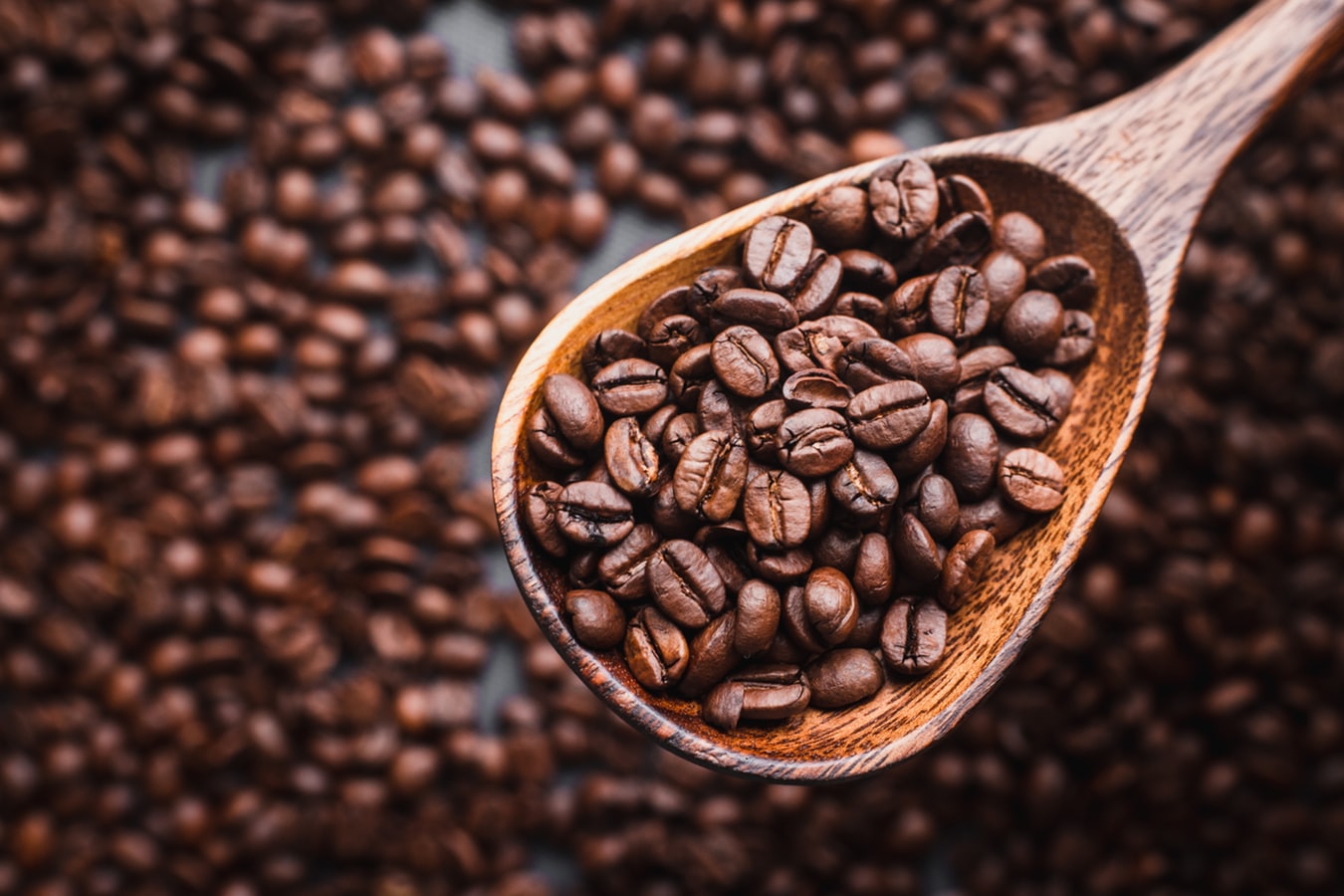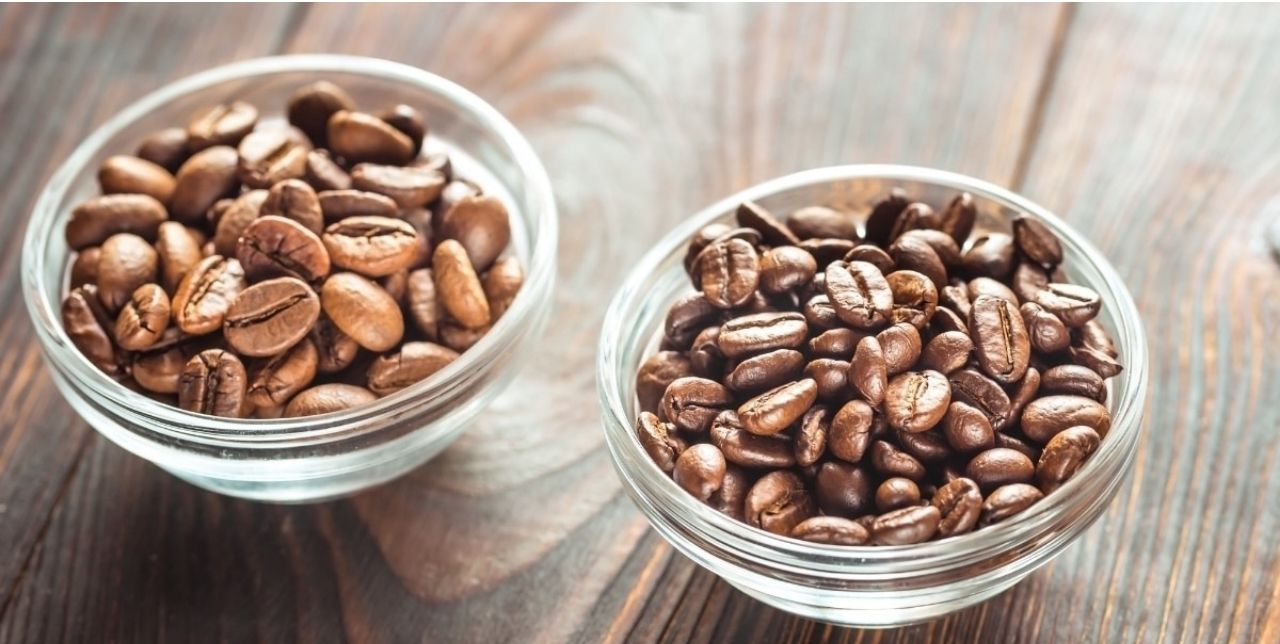If you buy a lot of coffee, you’ll have noticed by now that not every brand uses the same kind of coffee beans. Most people know about Arabica beans, but have you heard of Robusta coffee beans? Between them, these two types of beans make up the lion’s share of coffee beans sold worldwide, but of the two, the Arabicas are more popular. Coffee Robusta gets a bit of bad press for being seemingly inferior while coffee Arabica is touted for being the cream of the crop, so to speak. If this is true, then what’s the scoop on Robusta coffee and how is it different from the rest?
What’s the Difference Between Coffee Arabica and Robusta Coffee?
Coffee Robusta, or Coffea canephora, is a flowering plant in the Rubiaceae family. This plant grows as a small tree or large shrub, about 10 meters or roughly 32 feet tall. When cultivated, it is pruned to about 5 meters high to make it more manageable and easier to harvest beans.
 These trees have a shallow root system. Once the tree flowers, it takes about 10 to 11 months to produce ripe cherries which are ready to be harvested. The flowers have a fragrance similar to jasmine and there can be ripe and unripe cherries on the tree at the same time. It’s typically is grown in Africa and Indonesia, with the largest producer being Vietnam.
These trees have a shallow root system. Once the tree flowers, it takes about 10 to 11 months to produce ripe cherries which are ready to be harvested. The flowers have a fragrance similar to jasmine and there can be ripe and unripe cherries on the tree at the same time. It’s typically is grown in Africa and Indonesia, with the largest producer being Vietnam.
The coffee Arabica plant, on the other hand, is a member of the same family but grows to about half the size of the coffee Robusta plant. This variety of coffee prefers light shade and produces about 60% of the world’s coffee. It is known to be smoother, boasts more fruity flavors, and tastes a bit less bitter than Robusta coffee. It is also more expensive and more difficult to grow. It must be grown at higher elevations and does not produce as much fruit per tree as Robusta, which adds to the cost of growing it and harvesting it.
What’s So Good about Robusta Coffee?
Coffee Arabica shouldn’t get all the credit, however, because Robusta coffee has plenty of good attributes that make it worthwhile to grow, purchase, roast, and brew. Most expresso beans are Robusta. So what else does Robusta coffee have going for it?
Although some people claim that Robusta coffee beans are a considerably lower grade than arabica coffee beans, a lot depends on how the beans are grown, harvested, roasted, and brewed. There’s no reason a good cup of Robusta coffee won’t outshine a bad cup of arabica, and some people do prefer it.
Robusta coffee trees are tough and resilient trees. This is partially due to the fact that they have a far higher caffeine content, nearly twice that of Arabica. These trees can be grown at a lower elevation than arabica trees. The coffee plants are much easier to grow and maintain, as well. Another one of Robusta’s admired qualities are they bountiful yields of its trees. This higher productivity is one of the reasons this coffee is cheaper. The trees are more disease resistant, so they grow better and stronger. They can handle high temperatures over 30°C and strong, full sun. They are also thirstier than their highland-growing Arabica counterparts though, and require more water overall.
Caffeine and Flavor
Robusta coffee is generally known for being more bitter than other coffees. This, also, has much to do with this coffee’s higher caffeine content. Robusta beans are generally about twice as strong as Arabicas. The high caffeine content makes this plant hardier and less susceptible to diseases or pest problems. Caffeine’s intense bitterness seems to ward off a number of would-be pests. Another upside of higher caffeine content is that the coffee trees require less pesticides and herbicides to grow. This is part of the reason this coffee is cheaper to cultivate, and somewhat healthier, as the beans have been exposed to fewer chemicals.
How Is Robusta Coffee Used?
Interestingly, Robusta beans are often added to Arabica beans to add additional flavors and depth to the roast. It is sometimes used as a “filler” to add to the roast while lowering the overall cost of the coffee. Mixing in about 5 to 7 percent of Robusta coffee beans to about 93 to 95 % arabica beans will add depth and strength to the final product as well as lower the cost a bit. 
Robusta coffee is most frequently grown for use in making instant coffee. The beans used are often lower quality, inferior beans. They are harvested, roasted, and brewed into coffee. The coffee is then dehydrated, leaving behind crystals. When hot water is added to the crystals, instant coffee is brewed.
Robusta coffee is also an ingredient of fine espresso roasts, at a rate of about 10% Robusta to 90% Arabica. This gives the roast much more body and a crema, or foam head.
Though Robusta coffee isn’t reputed to be as tasty as Arabica, it does have its part to play. Its counterpart, Arabica, is a fussier plant, and needs special care to grow well, which is what makes it more expensive.
Cat’s Ass Coffee is made with 100% Arabica beans, naturally fermented by wild luwaks.

